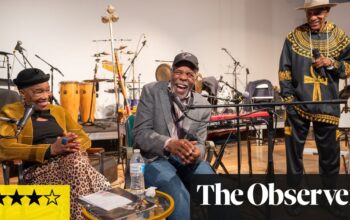
The New York Times is facing criticism for releasing an article discussing Taylor Swift’s sexual orientation.
The editor, Anna Marks, wrote a 5,000-word opinion piece titled “Look What We Made Taylor Swift Do,” which discussed potential references to the LGBTQ+ community in Swift’s music. Marks theorized that these references were coded messages hinting at Swift’s possible membership in the community.
CNN reports that both readers of the Times and individuals associated with Swift have expressed criticism of the piece.
A member of Swift’s team, who wishes to remain anonymous, stated that the decision to publish the op-ed was influenced by sexism and ethical concerns. According to the source, there is currently a bias against Taylor due to her immense fame, which allowed this article to be written about her but not about male artists like Shawn Mendes, whose sexuality has also been scrutinized by fans.
Some journalists will write about Taylor without any limits, even if it means invading her privacy, spreading lies, and being inappropriate. They justify this behavior as an “opinion piece,” but it is still unacceptable.
“This was the least defensible op-ed I can remember ever seeing the NYT run, made all the worst by the fact that it was written by a staffer, who specializes in these speculations,” Chris Willman, the chief music critic at Variety, wrote on Twitter. (In 2022, Marks wrote a guest op-ed essay for the Times speculating on Harry Styles’s sexuality, as well.)
Chely Wright, a country singer who identifies as queer, shared a tweet from Wilman which referenced Marks’s article. The piece highlighted Wright’s difficulties in publicly coming out in her career. Wright expressed her disapproval of the New York Times for publishing the article, stating that it was triggering for her to read. She explained that it was not because the writer mentioned her past struggles with suicidal thoughts, but because it discussed a public figure’s sexuality, which was upsetting to her.
Marks suggested that from the beginning of her career, Swift has been subtly indicating her identification as queer. According to Marks, a single dropped hairpin may not hold much significance on its own, but when viewed collectively, they represent the release of a ballerina bun after a lengthy performance. These hairpins have been present in Swift’s work long before queer identity became commercially viable in mainstream America, leading queer individuals to believe that Swift is part of their community.
Swift has embraced the LGBTQ+ community in the past, calling her concerts a “safe space” for LGBTQ+ people and publicly defending them in a 2019 interview with Vogue magazine against a record number of anti-gay bills introduced in states across the country. “Rights are being stripped from basically everyone who isn’t a straight white cisgender male,” she said. “I didn’t realize until recently that I could advocate for a community that I’m not a part of.”
However, she has not publicly acknowledged being a part of the queer community. In the introduction to her re-recorded 1989 album, which was released in October, Swift shared that she intentionally spent time with female friends at one point in her career in order to combat constant media speculation about her romantic relationships. She wrote, “If I only hung out with my female friends, it would be harder for people to make sensationalized or sexualized assumptions about me – right? But I later learned that people still could and would.”
Avoid the newsletter advertisement.
after newsletter promotion
Recognizing the potential criticism that her essay may receive, Marks proactively attempted to address any potential backlash in her writing. She acknowledged, “I am aware that some may view discussing a celebrity’s potential queerness before a formal declaration of identity as too scandalous and focused on gossip to be deemed worthy of discussion.”
“I have similar concerns as well. However, the narratives that hold power over our societal perceptions dictate what artists and their audiences are allowed to express and embody,” she stated. “Whenever an artist conveys queerness and it goes unnoticed, that message fades away. Acknowledging the potential for queerness – while understanding the distinction between potential and certainty – helps to sustain that message.”
The Times has chosen not to respond directly to the essay and has referred to Marks’ own thoughts on criticism in the piece.
Source: theguardian.com



